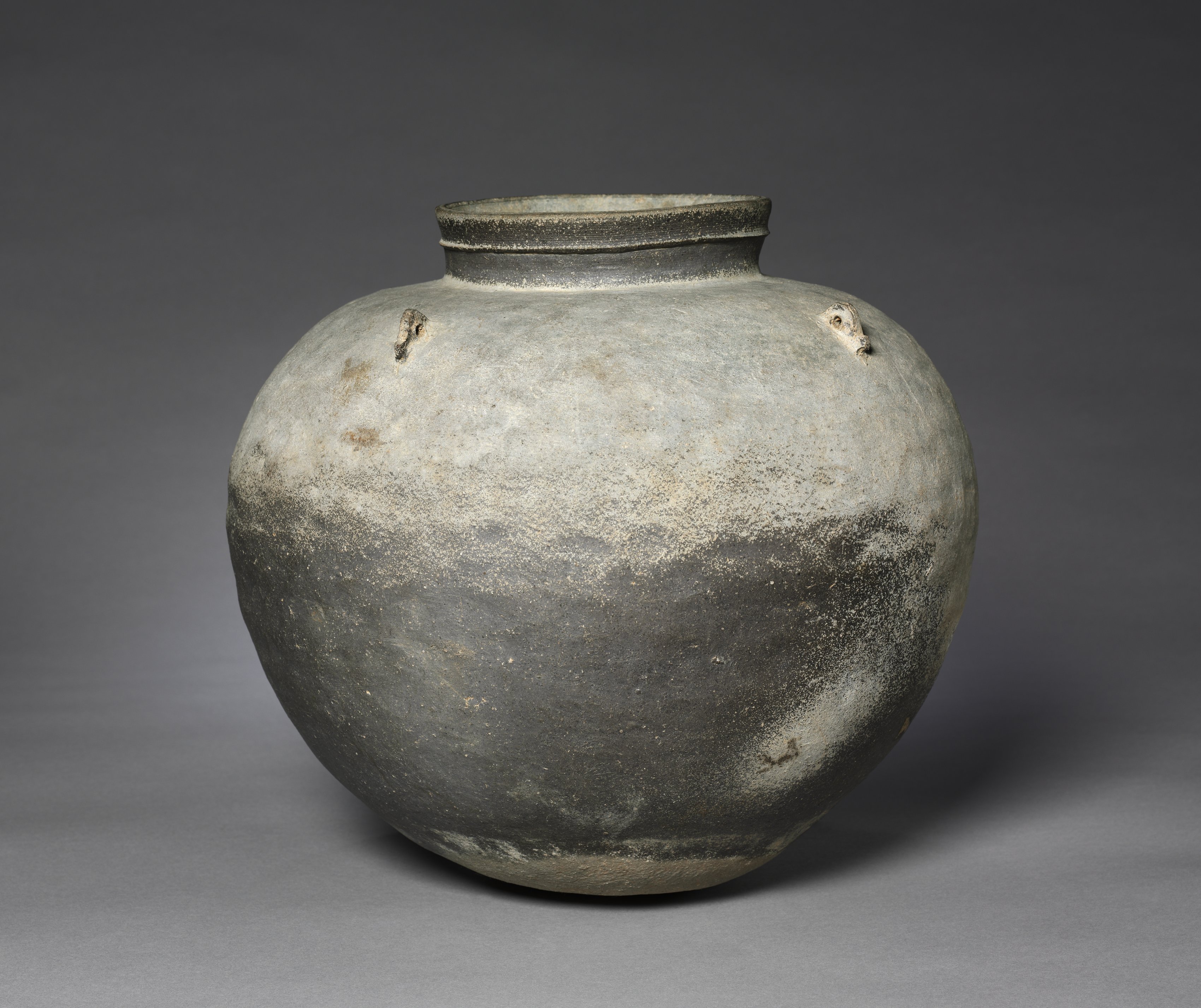The Cleveland Museum of Art
Collection Online as of April 19, 2024

Jar with Four Lugs
500s–600s
(57 BCE–668 CE)
Diameter: 32.6 cm (12 13/16 in.); Overall: 29.9 cm (11 3/4 in.)
Location: not on view
Did You Know?
Closed kilns built on hillsides became widely used for producing this type of pottery vessel in Korea during the Three Kingdoms period.Description
This storage jar comes from the Paekche kilns. The matte gray surface of ash deposits on the upper body provides an appealing decoration. Paekche potters often employed the pounding technique (tanal in Korean) to treat the surface, a method to strengthen the clay body.- ?–May 5, 1993Hongnam Kim [born 1948], Seoul, South Korean, given to the Cleveland Museum of ArtMay 5, 1993–The Cleveland Museum of Art, Cleveland, OH
- Yim, Seung-deok and Jeong-ho Seo. "A Study of Manufacturing Technique on the Padding Pottery in Sabi-Baekjae Period [百濟 泗沘期 打捺文土器 製作技法 硏究." Muhwa sahak (2011): 97-131. www.dbpia.co.krLee, Chang-hyun and Yu-ri Shin. “A Study on Residential areas in Yeongdong District during the Period of the Three Kingdoms [嶺東地方三國時代住居址試論].” Munhwa sahak 33 (2010): 21-61. www.dbpia.co.krHwang, Bo-kyung. “Damaged Patterns and Purpose of the Damaged Earthenware Found in the Tombs of Shilla Dynasty in Seoul and Gyeonggi Areas [서울·경기지역신라고분부장토기의훼기습속고찰].” Minsokhak yeongu 41 (2017): 231-262. www.dbpia.co.kr
- Asian Autumn: Early Ceramics from Japan and Korea. The Cleveland Museum of Art, Cleveland, OH (organizer) (September 19-December 3, 1995).
- {{cite web|title=Jar with Four Lugs|url=false|author=|year=500s–600s|access-date=19 April 2024|publisher=Cleveland Museum of Art}}
Source URL:
https://www.clevelandart.org/art/1993.43